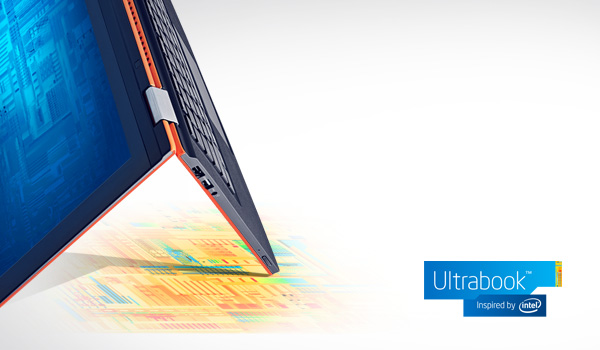Report: Touchscreens to Become a Standard Specification for 3rd Generation Intel Ultrabooks
Touchscreens will be a standard feature for Intel's 3rd Generation of Ultrabooks that will be arriving later this year.

According to DigiTimes' "sources from the upstream supply chain," Intel has decided to make touchscreens a standard specification for all third generation ultrabooks that are expected to arrive following the release of the Haswell range of processors.
Though Windows 8 certainly benefits from a touch interface, Intel's decision to mandate its inclusion seems unwise given the continuing shortage of touch panels, increasing DRAM prices and Intel's rumored Haswell price hike. These factors, when combined, are expected to increase costs by $70 to $80 per unit.
The unnamed sources further added that despite Intel's 20 percent increase in marketing subsidies and promises to its partners a smooth supply for "key components," they believe that this strategy will greatly shrink ODM profits and not benefit the overall business of Intel's partners.
Contact Us for News Tips, Corrections and Feedback
Get Tom's Hardware's best news and in-depth reviews, straight to your inbox.
-
InvalidError Fingerprint smudges become standard on your $1200 laptop. Yay.Reply
I personally prefer a smudge-free screens to the maximum extent possible. Not to mention how much of an ergonomic hazard touch screens on laptops/desktops will likely be unless the devices are convertible tablets. -
Soda-88 I'd rather use numpad to move the mouse pointer around than having anything to do with touch.Reply -
wiredthisway give it some time and i think Leap Motion will be integrated into laptops and monitors. i'm almost tempted to pre-order.Reply -
n1tr0 We bought one touch screen laptop in the past year with Windows 8. The touch portion along with the start screen were used 2-3 times and then it was back to using the notebook the traditional way, except with a whole lot more clicking to get things done. Intel doesn't need to require touch screens, Microsoft needs to add a start button and desktop-default mode !Reply -
twelve25 If Intel is going to limit the options for an "Intel Approved" Ultrabook, I am sure we will see plenty of non-Ultrabook Ultrabooks. As in, Lenovo can make a slim, SSD non-touch ultrabook and just call it a slim laptop.Reply -
gnodeb No reason to protest. It's not like they replaced mouse with touch, they just added it. I don't think that will increase price eider. Maybe they want to be sure that if you pay ultra price, you can play "fruit ninja" the way it was meant to be played.Reply -
InvalidError Reply
The problem with making an Ultra non-Ultra Ultrabook is the manufacturer does not get any of Intel's R&D/marketing subsidy.10662673 said:If Intel is going to limit the options for an "Intel Approved" Ultrabook, I am sure we will see plenty of non-Ultrabook Ultrabooks. As in, Lenovo can make a slim, SSD non-touch ultrabook and just call it a slim laptop.
I appreciate how Intel tries to push the market in new directions but trying to force-feed touch-screens on laptops/ultrabooks simply seems plain wrong. If I wanted a touchable x86, the Surface Pro makes more sense to me: with the Surface, the keyboard is optional while with the Ultrabook, you already have a more ergonomic keyboard+trackpad/trackpoint attached to your touch-screen which makes the touch-screen redundant, unlikely to get much use besides backup/secondary input method. -
JOSHSKORN Can't wait until this touchscreen fad goes away and we're back to the good ole keyboard and mouse.Reply -
boon4376 I like how the only reason you need a touch screen is the Windows 8 start screen... Which I spend 90% of the time bypassing because it's useless.Reply